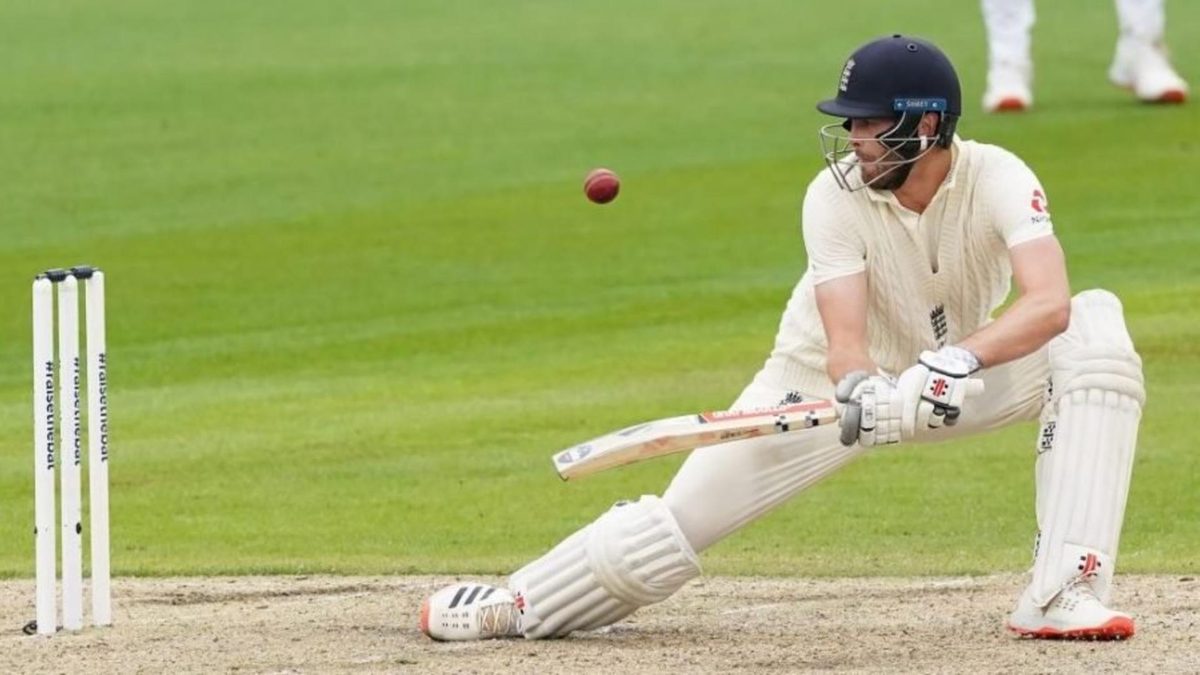
Dom Sibley finished day one in Manchester on 86* but still received criticism for his strike-rate rotation against spin from a trio of former England captains. Yas Rana argues that after his recent success and the obvious clarity behind his approach, the flak is unwarranted.
Not that long ago, Dom Sibley found game-time easier to come by in T20 cricket than first-class cricket. A regular in the Surrey T20 set-up but a peripheral figure in their County Championship squad pushed down the order after the signings of Scott Borthwick and Mark Stoneman, Sibley – a former childhood prodigy, then 21 – sought a move away from The Oval to further his England Test aspirations. Without a County Championship hundred in four years, those hopes looked quite far away from being realised.
“I was batting five in the four-day line-up and although at that time I was never on anyone’s radar, I always had it in the back of my mind that I always wanted to play for England,” Sibley told Wisden during lockdown. The move paid off big time. A move back up the order, a few well-documented technical tweaks and a few thousand runs later and Sibley, who is still only 24, has fulfilled an ambition that previously felt far-fetched.
He’s doing a damn good job, too. For eight years, England have been actively searching for opening batsmen with staying power at the crease; batsmen who show good judgement around off stump, who can withstand hostile new ball bursts and the moving Dukes ball. Not since Alastair Cook broke into the England team in 2006, perhaps with the exception of Rory Burns in the last year’s Ashes, has an England opener looked so confident in his method. At the close on day one in Manchester, Dom Sibley averages 45.27 in Test cricket. Alastair Cook finished his career with an average of 45.35.
Going into day two, England are in control of the Test. There will be desperate disappointment in the West Indies camp that after inserting England into bat and having them 29-2 in overcast conditions they could only take one further England wicket.
Sibley, England’s man of the day, wasn’t immune from criticism though. “Sibley just has to find a way to up the tempo once he has found a way to get in,” said Michael Vaughan on Test Match Special. He wasn’t alone in asserting that point. His fellow England captains Michael Atherton and Nasser Hussain – a pair responsible for four of England’s eight slowest ever Test centuries – expressed similar sentiments on Sky, with the latter asking England coach Chris Silverwood at the end of the day if rotation of the strike against spin was an area Sibley needed to improve.
His strike-rotation against Roston Chase was under particular focus. The argument goes that by having limited scoring options against spin bowling that isn’t hugely threatening, Sibley allows pressure to build unnecessary; he’ll struggle in Asia, they say. And that might be a fair argument to make against most modern batsman, but Sibley is wired differently. He is totally unfazed by leaden run-rates. Dot balls don’t bring about rash strokeplay; he doesn’t care that you find him boring.
He may well find run-scoring harder in the sub-continent, but if Sibley looked to add scoring shots against spin, or pace for that matter, England may well suffer a short-term loss if he initially fails in doing so. He has a method that has worked thus far – Sibley averages over 70 in 2020 – and encouraging deviation from that so early in his career with future tours in mind might hurt England in the here and now. After all, having an eye on a tour 16 months away arguably affected their own team selection to their detriment in Southampton.
The focus on Sibley’s strike-rotation felt especially unfair today when you consider how the guy at the other end was doing. Ben Stokes, who has arguably been guilty of not making the most of good starts in recent times, registered the slowest first innings half-century of his career. At one point in proceedings, he’d scored just 11 off 60 against pace. On a sluggish wicket accompanied by a painfully slow outfield, run-scoring was tough; getting to the close just three down sets the Test up perfectly for England. Ollie Pope, Jos Buttler, Chris Woakes and Sam Curran will bat tomorrow against an attack that’s already toiled in the field for a day. To pick holes in the methodology behind a rare good day with the bat at home – it’s been nearly three years since England reached 400 in the first innings of a home Test – is counter-intuitive.
That’s not say that Sibley’s technique is flawless. He is yet to answer questions about his ability to play balls directed towards his armpit – West Indies oddly refrained from using this line of attack today – and his bat still comes down at an awkward angle when he drives through the off-side, a tendency that contributed to his offering of a chance to Jason Holder at second slip. But his method of leaving relentlessly and taking as little risk as possible at all times against both spin and pace is one that is so far paying dividends. Yes, it’d be nice if he added a sweep or lofted drive to his repertoire against spin but if he doesn’t, that’s more than fine too.
Sibley copped his fair share of criticism following his departure from his boyhood Club in 2017 for a decision he knew was right for the betterment of his career. He knew that to achieve his goals, he had to move. It may prove wise to allow Sibley trust his method now, too.








